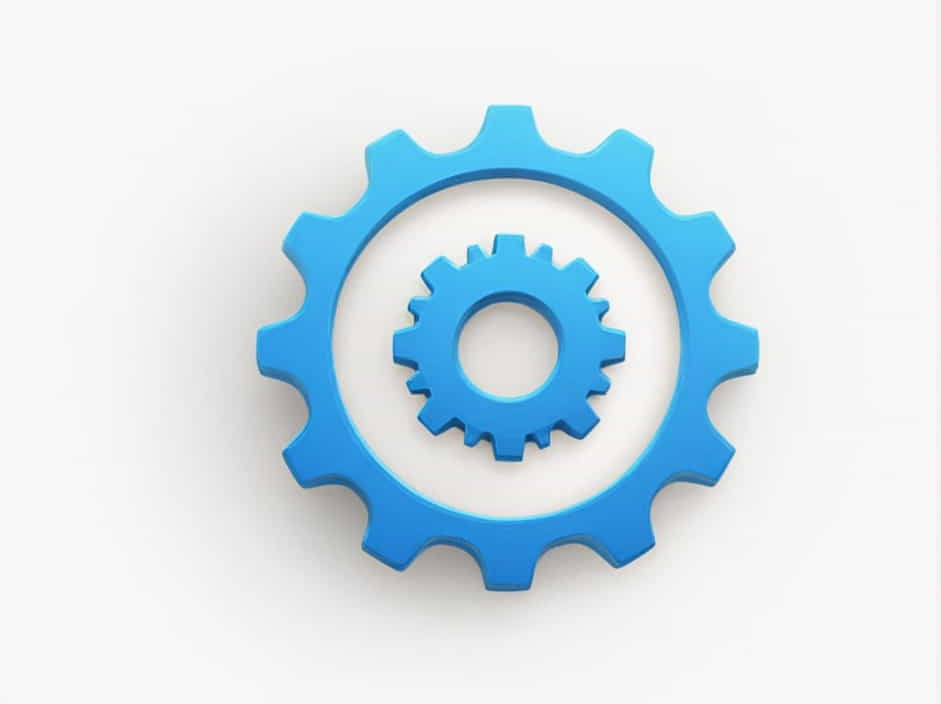Helical gears are widely used in mechanical systems due to their smooth operation, high load capacity, and efficiency. Unlike spur gears, helical gears have angled teeth, which provide gradual engagement, reducing noise and vibration.
A key parameter in helical gears is the virtual number of teeth (also called the equivalent number of teeth). This concept is essential for gear design, strength calculations, and performance analysis.
This topic explains the virtual number of teeth in helical gears, how to calculate it, and why it matters in mechanical applications.
What Is the Virtual Number of Teeth in Helical Gears?
Definition
The virtual number of teeth ( Z_v ) in a helical gear is the equivalent number of teeth that a spur gear would have to produce the same contact conditions as the helical gear.
Since helical gears have teeth inclined at an angle (helix angle), their effective tooth engagement is different from spur gears. The virtual number of teeth helps engineers determine corrective factors for gear strength, durability, and meshing characteristics.
Formula for Virtual Number of Teeth
The virtual number of teeth is calculated using the following formula:
Where:
- Z_v = Virtual number of teeth
- Z = Actual number of teeth
- beta = Helix angle (degrees)
This equation accounts for the increased contact length due to the helix angle.
Why Is the Virtual Number of Teeth Important?
1. Reducing Undercutting in Small Gears
In spur gears, small tooth counts can lead to undercutting, which weakens the gear teeth. Helical gears effectively increase the tooth count, reducing this risk and improving gear durability.
2. Strength and Load Distribution
A higher virtual number of teeth means better load distribution across multiple teeth, which enhances gear strength, wear resistance, and longevity.
3. Efficiency and Smooth Operation
Helical gears operate more smoothly due to gradual engagement. The virtual tooth count helps engineers design gears with optimal torque transmission and minimal vibrations.
4. Correcting Gear Ratio Calculations
When designing a gear train, engineers use the virtual number of teeth to adjust calculations and ensure precise speed ratios and torque transmission.
Calculation Example: Virtual Number of Teeth
Let’s assume we have a helical gear with:
- Actual teeth ( Z ) = 30
- Helix angle ( beta ) = 20°
Using the formula:
First, calculate cos 20circ :
Then, cube the cosine value:
Now, calculate Z_v :
Thus, the virtual number of teeth is 36, meaning this helical gear behaves like a spur gear with 36 teeth in terms of contact and load distribution.
Factors Affecting the Virtual Number of Teeth
1. Helix Angle ( beta )
- **Higher helix angles increase Z_v **, improving smoothness and load capacity.
- Typical helix angles range between 15° and 30°.
2. Actual Tooth Count ( Z )
- More actual teeth result in a higher virtual tooth count, reducing the risk of undercutting.
- Low-tooth-count helical gears rely heavily on Z_v for strength calculations.
3. Gear Material and Design
- Stronger materials can handle higher loads even with lower Z_v .
- Tooth profile modifications affect gear meshing and efficiency.
Comparison: Virtual vs. Actual Number of Teeth
| Factor | Actual Number of Teeth (Z) | Virtual Number of Teeth (Zv) |
|---|---|---|
| Definition | Physical number of gear teeth | Equivalent number in a spur gear |
| Affected by Helix Angle? | No | Yes |
| Used for Load Calculations? | Sometimes | Yes, for strength analysis |
| Affects Undercutting? | Yes | Reduces undercutting |
| Changes with Gear Material? | No | No |
Applications of Virtual Number of Teeth
1. Automotive Transmissions
- Helical gears in gearboxes use virtual tooth calculations to ensure smooth shifting and torque handling.
2. Industrial Machinery
- Heavy-duty gear systems rely on virtual teeth to optimize gear meshing and durability.
3. Aerospace Engineering
- Aircraft gear mechanisms use virtual tooth analysis for lightweight and high-efficiency gear design.
4. Robotics and Automation
- Precision gears in robotics require accurate tooth count corrections for smooth operation.
The virtual number of teeth in helical gears plays a critical role in gear strength, efficiency, and durability. By adjusting for the helix angle, engineers can improve load distribution, reduce undercutting, and enhance gear performance.
Understanding how to calculate and apply the virtual number of teeth is essential for designing reliable, high-performance mechanical systems across various industries.
